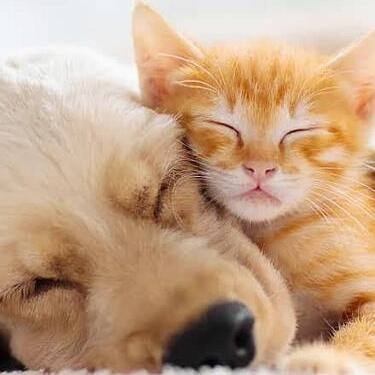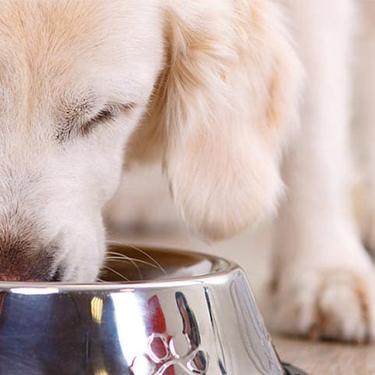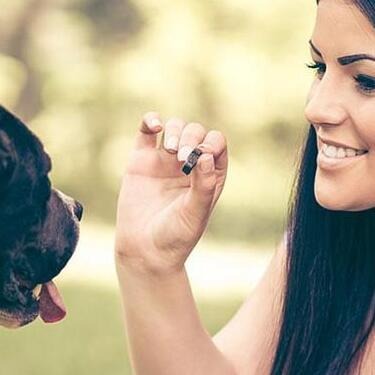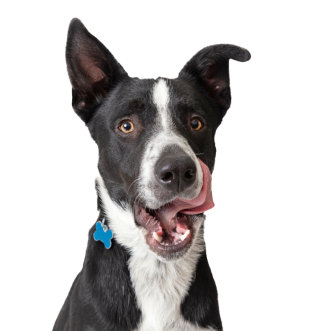
-
Find the right food for your pet
Take this quiz to see which food may be the best for your furry friend.
Find the right food for your pet
Take this quiz to see which food may be the best for your furry friend.
Featured products
 Adult Healthy Cuisine Roasted Chicken, Carrots & Spinach Stew Dog Food
Adult Healthy Cuisine Roasted Chicken, Carrots & Spinach Stew Dog FoodDelicious roasted chicken paired with tender vegetables in a succulent stew
Shop Now Adult 7+ Perfect Digestion Chicken, Whole Oats & Brown Rice Recipe Dog Food
Adult 7+ Perfect Digestion Chicken, Whole Oats & Brown Rice Recipe Dog FoodScience Diet's breakthrough nutrition supports ultimate digestive well-being & healthy microbiome for dogs age 7+
Shop Now Small & Mini Savory Stew with Chicken & Vegetables Dog Food
Small & Mini Savory Stew with Chicken & Vegetables Dog FoodA delicious complement to the nutrition of Science Diet Small & Mini 7+ dog food
Shop NowFeatured products
 Adult 7+ Senior Vitality Chicken & Vegetable Stew Cat Food
Adult 7+ Senior Vitality Chicken & Vegetable Stew Cat FoodImproves Everyday Ability to Get Up & Go
Shop Now Adult Savory Entrée Can Variety Pack Cat Food
Adult Savory Entrée Can Variety Pack Cat FoodPrecisely balanced nutrition with the delicious taste of savory minced chicken to help fuel the energy needs of cats during the prime of their life
Shop Now Adult 7+ Tender Tuna Dinner Cat Food
Adult 7+ Tender Tuna Dinner Cat FoodWith delicious chunks in a decadent gravy
Shop Now -
Dog
- Dog Tips & Articles
-
Health Category
- Weight
- Food & Environmental Sensitivities
- Urinary
- Digestive
- Joint
- Kidney
-
Life Stage
- Puppy Nutrition
- Adult Nutrition
- Senior Nutrition
Cat
- Cat Tips & Articles
-
Health Category
- Weight
- Skin & Food Sensitivities
- Urinary
- Digestive
- Kidney
-
Life Stage
- Kitten Nutrition
- Adult Nutrition
Featured articles
 Why Are Dogs and Cats So Cute?
Why Are Dogs and Cats So Cute?If waggy puppy dog tails and furry kitten yawns make you swoon, you're not alone. Why are cats so cute? And, dogs too! Let's find out!
Read More Do Dogs and Cats have Belly Buttons?
Do Dogs and Cats have Belly Buttons?Learn whether cats & dogs have belly buttons like humans, what the function is, and if there are any health concerns associated with it.
Read More Does My Pet Hate Me?
Does My Pet Hate Me?Learn tips for bonding with your pet if you've ever thought, 'My dog doesn't like me, or 'Why do I have a standoffish cat?'
Read More -


You've heard of skin cancer in people, but can dogs get skin cancer? Dogs can develop several different types of skin cancer and, like in people, each one can have different signs. What does skin cancer look like on a dog? If you notice a suspicious lump or growth on your dog, it's always a good idea to have your veterinarian look at it. Fortunately, the majority of skin growths in dogs are benign, ranging from fatty tumors, or lipomas, to sebaceous cysts.
Can Dogs Get Skin Cancer?
While there's no definitive understanding about what makes some dogs get skin cancer, genetics seem to play a major role. According to the American Kennel Club (AKC), hormonal abnormalities, certain viruses and exposure to chemicals in the environment may also increase the risk of skin cancer in dogs. Direct, prolonged sun exposure may be a risk factor as well, though the National Canine Cancer Foundation explains that, "in dogs, the theory of exposure to sun is less obvious" than it is in humans.
Some dog breeds are more prone to certain cancers than others. Golden retrievers, pugs and boxers, for example, are more likely to develop mast cell tumors, explains Morris Animal Foundation. Labrador retrievers tend to grow benign fatty masses — some can get quite large. Poodles and poodle mixes can also grow benign cysts. When it comes to cancer, however, any dog breed can develop it, so it's important to be on the lookout.
Diagnosis
When you bring your buddy to the vet with a concerning lump, the vet will likely perform a fine needle aspiration. This process involves sticking a simple needle, such as those used for vaccinations, into your dog's mass to extract some cells. Your vet can then examine the cells under a microscope. If anything looks suspicious, they may send the microscope slides to a pathology specialist. Sometimes a few cells on a slide aren't enough for a diagnosis, so your vet may need to perform a biopsy on your dog or surgically remove the entire mass to send off for testing. This is the most accurate way to get a diagnosis.

Presentation
Can dogs get skin cancer? Yes. So, what does skin cancer look like on a dog? Given the variety of skin cancers, signs can vary. As a general rule of thumb, any lump on your dog's skin may be cause for concern, especially if it is new or fast-growing. Some cancers can be firm and others can be soft, so the feel of the growth isn't a reliable indicator. According to Purdue University's College of Veterinary Medicine, one type of skin cancer, cutaneous lymphoma, tends to present first with patches of red, flaky skin. These areas may be accompanied by hair loss and can resemble ringworm.
Another type of skin cancer, malignant melanoma, causes black and pigmented growths, explains BluePearl. Both cutaneous lymphoma and malignant melanoma can quickly become fatal and require prompt diagnosis and treatment. Most other types of skin cancer look like lumps in the skin, and they may or may not have fur.
If you find a lump on your dog, how much should you worry? What are some of the signs to look out for? One cause for concern is rapid growth. Say you pet your dog in that one favorite spot all the time. One day, you notice a small lump. The next day, it's doubled in size. This could be a sign of trouble. Another sign to watch for is a mass that seems to be bleeding for no reason. Whether or not your dog licks or pays attention to a mass, however, isn't generally a good indicator of a cancerous growth.


Tasty Tips
Treatment
Receiving a cancer diagnosis in your dog is never easy. Along with all of the emotions you may be feeling, you're likely wondering about next steps. What treatment is available? How can you best support your dog? Fortunately, many types of canine skin cancer can be cured with surgical removal. According to the AKC, one family of skin cancer, spindle cell sarcomas, tends to recur after surgical removal. Another surgery or radiation therapy can help in such cases. Luckily, these tumors rarely metastasize (spread to other parts of the body). Some skin cancers, such as mast cell tumors, can spread to the internal organs. The majority of these tumors aren't aggressive, however, and after removal, you can put the cancer scare behind you. If they are aggressive, they may require chemotherapy. It's important to get an accurate diagnosis and know all your treatment options.
Early Detection Is Key
Canine skin cancer can range from a tiny, dark pigmented lump to a large, rapidly growing mass. While it's not possible to completely prevent skin cancer in dogs, early detection can make a huge difference in helping your dog recover faster — and possibly live longer. To stay on top of your dog's lumps and bumps, give them a thorough petting session at least once a week. Consider it a doggy massage! For older dogs who have many lumps, keep a chart or diagram of where and how large they are. That way, if one starts growing rapidly, you'll know. Check with your vet about any new lumps. If it's small, trim the surrounding fur, or even get a marker and circle it. It can sometimes be difficult to relocate a tiny lump once you have your dog in the vet's office.
Can dogs get skin cancer? While the answer is yes, you can rest easy that most skin cancers are treatable. The most important thing is to monitor your dog regularly. Next time you pet Fido, you might have a new focus — and that's a good thing!


One of our staff authors prepared this article for you
Related products
Related articles

Learn how today's wet dog food blends have gotten a face lift, and how you'll provide your dog the nutrition he needs in the form he loves.

Learn the the dangers of feeding your dog chocolate, which types are most dangerous, and what to do if you discover that they have consumed chocolate.

Learn about choosing the right dog food to help ensure your adult dog will receive the correct balance of nutrition.

Proper nutrition for your pregnant or nursing dog is vital to her and her puppy's health. Learn what you should do provide her with the proper nutrients.

Put your dog on a diet without them knowing
Our low calorie formula helps you control your dog's weight. It's packed with high-quality protein for building lean muscles, and made with purposeful ingredients for a flavorful, nutritious meal. Clinically proven antioxidants, Vitamin C+E, help promote a healthy immune system.
Put your dog on a diet without them knowing
Our low calorie formula helps you control your dog's weight. It's packed with high-quality protein for building lean muscles, and made with purposeful ingredients for a flavorful, nutritious meal. Clinically proven antioxidants, Vitamin C+E, help promote a healthy immune system.

